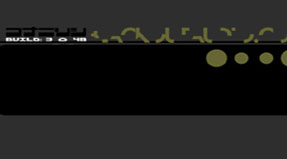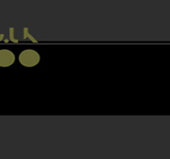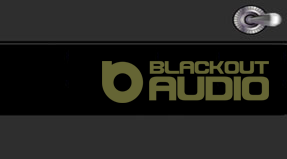how do you go about basslines?
I've tried using synths and i just can't get anywhere near the sounds I want for my basslines. (i'm a complete n00b though).
Basslines piss me off so much though (i'm that hopeless at them) so _any_ tips you can provide will me much welcomed.
(sorry if this type of thread has been posted millions of times - i've been drinking and cant work out of to use the search function so just link me up with past threads if it's been covered already):ohdear:
Welcome to the Blackout Audio Techno Forums :: Underground Network.
 |
 |
 |
 |
Results 1 to 17 of 17
Thread: basslines
-
15-02-2007, 12:36 AM #1
 basslines
basslines
-
15-02-2007, 04:31 AM #2

I used to have the same probs with basslines mate, they all used to sound too cheesy and commercial, not the aggressive techno sort at all.
It's trial and error with synths, pick one you like and feel comfortable using and then learn how the waves, modulation (very important) and frequency cutoff affect the sound.
It's all in the modulation with synths, and a sound that can sound terrible with the frequency cutoff open can sound amazing with the cutoff nearly closed and a bit of resonance. All this trial and error will help you devise a method for getting the sound you want.
Other things to try, mix a synth sound with percussion sounds (snares are good) playing the same bass melody, and then group the result and close down a cutoff filter over the lot of it.
FM creates good modulation with bass, so try a bit of that as well.
The synth that taught me the most about bass is the V-Station, I highly recommend trying that as a starting point.
-
15-02-2007, 05:07 AM #3BOA Lifetime Member

- Join Date
- Aug 2004
- Location
- Münster, Germany
- Posts
- 2,753

Make use of the randomizing feature. Then take it from there.
You could for example load up a percussive loop or single-shot,
randomize that and see where inspiration takes you. Preferably do this
with pitched down sounds.
What kind of basslines are you after? Any examples?
-
15-02-2007, 06:51 AM #4Junior Freak

- Join Date
- Aug 2003
- Location
- alleybeating
- Posts
- 453

I definately agree with loopdon's randomizing advice.
Some people call it cheating, but sometimes I use it when I have no idea what direction i should be taking the bassline in. When you play the bassline manually on the keyboard, this can get frustrating when it doesnt fit into the mix properly.
Using cubase's step designer is one of the most powerful bassline random generators i have ever used. It can do wonders! Many times, I may randomize just to see where it takes me, and then i will paste the midi notes and manually re-arrange some notes on the midi map....basic trial and error stuff.
I've also noticed some producers like to program their bassline patterns with the same notes as other synth chords that are also playing in the track. For example, if you have a high pitched three note chord pattern in the track, then finding a nice low basspatch on a synth and literally transposing that exact same pattern a few octaves lower can create some interesting sounds too.
Just my 2 cents.
-
15-02-2007, 07:46 AM #5

tried using sampled 909 toms pitched down?
-
15-02-2007, 10:06 AM #6

-
15-02-2007, 10:39 AM #7

Careful (i.e. sparing) use of amp simulation / distortion.
-
15-02-2007, 11:21 AM #8

Setting your amplitude envelope (and filter envelope) right is important to get the right dynamics with a bass sound. I often just use simple sine waves as a source, but then with a bit of perseverance you can shape a decent bass sound out of it.
-
15-02-2007, 11:49 AM #9

Another idea is to experiment with different types of synthesis.
Subtractive synths are great, but there's a wealth of other stuff out there. I've had loads of fun messing around with FM synthesis, additive synthesis, and vector / wavetable synthesis.
There are loads of free VST plugins kicking around the net, and some of them offer very unique sound modelling engines.
Or if you get really bored, sit down and write your own... I ended up witing a square wave synth a few years back, for my dissertation. Learnt a hell of a lot about how everything works in the process.
-
15-02-2007, 11:56 AM #10

.... and don't forget about velocity.
Most synths will let you adjust parameters according to the velocity of the MIDI note-on data. Experiment with using random velocities in your patters, or rhythmic variation in velocity. (e.g. Cubase lets you draw in velocity with Sine curves, sawtooths etc.)
-
15-02-2007, 12:08 PM #11

I find with basslines its almost as important to work on your mix than the bassline itself.
Need to think about what your track is doing, and what sort of bassline you are going for because its going to affect every other element of the track.
If the bassline is the main feature you have to build everything else round it.
If its supposed to help drive along the groove, you should incorporate it after you've got your groove.
You'd be suprised how ordinary the actual bassline sound itself is on many outstanding tracks. Its more down to clever positioning in the mix.
Listen to D&B for some ideas on how to use bass. The tracks with the biggest basslines just have percussions sizzling on the top, and the bass takes up nearly all the space. Other tracks are more percussion led and theres just a deep sub adding depth.
Really depends on what you are looking for. Give us some examples mate, sure we can help ;)
-
15-02-2007, 01:53 PM #12

Doing your bassline later as jay said is 1 way of doing it,but personally i get my kick,then work on the bass before anything else,regardless of what style,vibe im going for.Just find starting at the bottom and working my way up easier.Once youve got it right,youve got a significant chunk of the trk done...in my opinion.
-
15-02-2007, 10:04 PM #13

-
15-02-2007, 10:09 PM #14

I don't want to limit myself to when style of techno (or even EDM) so I'm just trying to get to grips with the theory.
Eventually i want to be-able to write any kind of bassline as i love my bass.
So basically just throw me some hints at how to produce what ever basslines you favour and i'll have a play around to see if i can make it my own (so to speak).
-
16-02-2007, 11:58 AM #15

Sure...
Basically, most synths work using a "subtractive" method. If you've used any kind of analogue (or vitual analogue) synth equipment this is almost certainly the model you will have used. You start with one or more osciallators, which feed out harmonically rich signals. You then remove the frequencies you don't want using a filter... hence "subtractive".
However, though this is the most popular and pervasive synthesis method, there are many, many others.
FM synthesis was incredibly popular in the 80s. It's a digital synthesis method which is famously complex, but creates some very unique characteristic tones - often very "bell" like in nature. Native Instruments FM7 plugin does a very good job of this kind of thing, but there are a few freeware FM synths out there if you just want to try it out. As I say, it's very complex but just messing around can yield incredibly interesting results.
Additive synthesis works in the opposite way to subtractive synthesis. You create sounds by combining fundamental harmonics. There's a VST around called Virsyn Tera which is supposedly very good at this. I'm sure there will be free versions if you hunt around.
Vector or WaveTable synthesis was hailed as "the future" in the 90s, but then everything went retro again and it kind of fell to one side. Possibly the most famous vector synth was the Korg Wavestation. It works by taking very short samples (waves) and looping them. Then, you combine lots of these little loops (wavetables) and you can morph between them in realtime. This is really good for creating pads and atmospheres and other unique sounds that just aren't possible with conventional synthesis.
Finally, a newer concept which sees a lot of use these days is granular synthesis. You start with a sound source in the form of a sample, which you then chop up into very small chunks (grains) which you can play back in arbitrary orders at whatever speed you like. This is the principle that underpins timestretching, and it leads to lots of glitchy noises.
Don't worry if this all sounds really confusing - it is!
The best way to understand a synthesis method is to just mess around with a plugin (or whatever) and understand how the different controls affect the sound. Once you've done that for a bit, you'll be able to read back over some of this and it will probably make much more sense.
Hope I haven't confused you more!
-
16-02-2007, 01:15 PM #16

I`m nearly done with my production masterclass part 2
(part 1 here on BOA) http://www.blackoutaudio.co.uk/content/view/29/29/
The part 2 has a big section on compression, attempting to put it all in laymans terms, and giving examples of all the various uses of compression.
There is also a section called Bass(ics) which deals with bass treatment and various methods (obviously, music theory, melody, and scales are something you will need to learn yourself), plus another section on EQ and mastering.
I`m typing it up this week, and then sending it to EG to go up on the site soon I hope.Solitary by nature.
Isolation is the gift.
Does anyone have courage to stand apart any more?
myspace.com/dirtybassgrooves
http://www.myspace.com/dirtybassvoidloss
http://www.subgenius.com
-
19-02-2007, 10:02 PM #17

techmouse: that actually explains things very well. thanks mate
dirtybass: i'll look forward to reading it


 Reply With Quote
Reply With Quote

